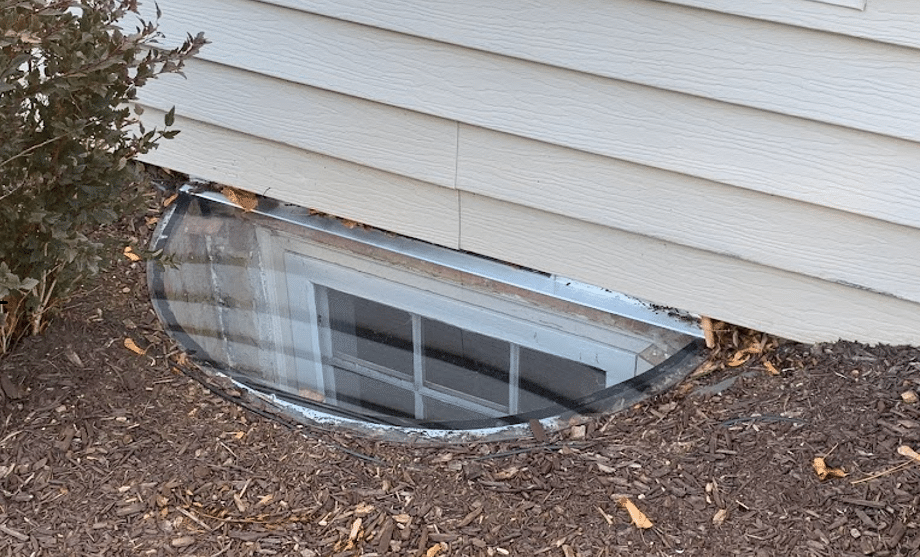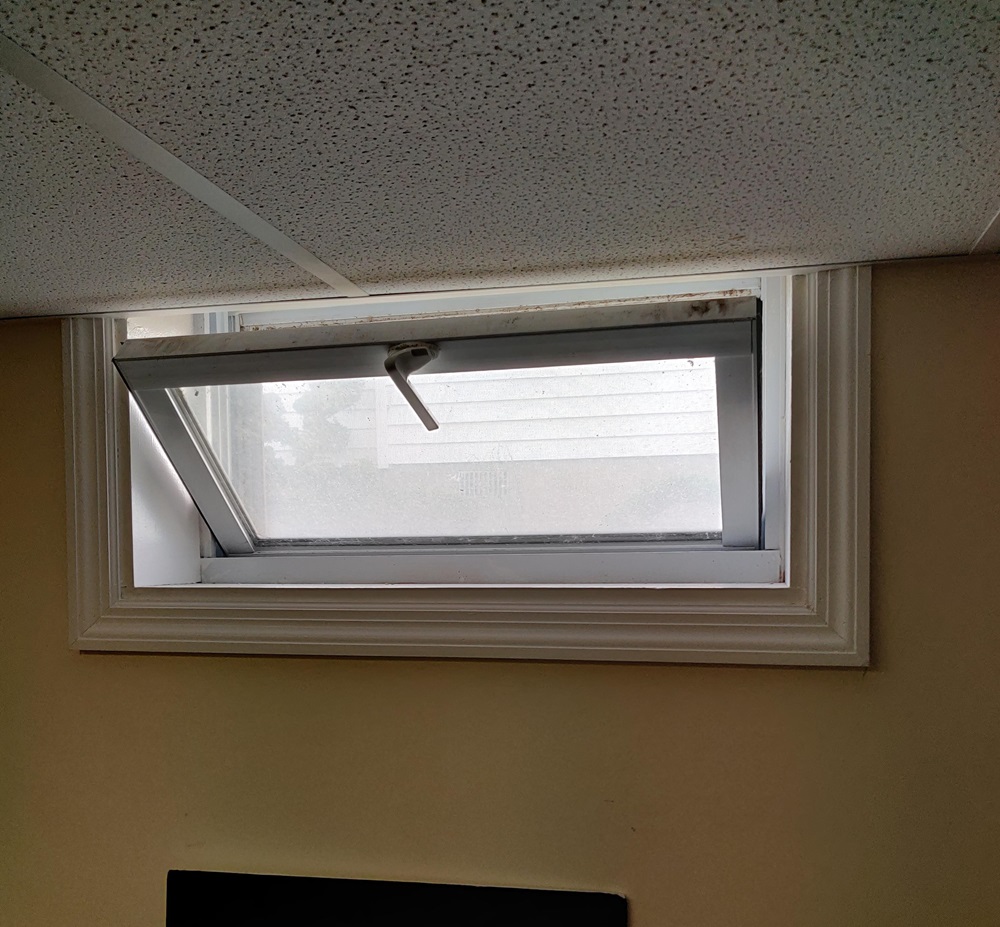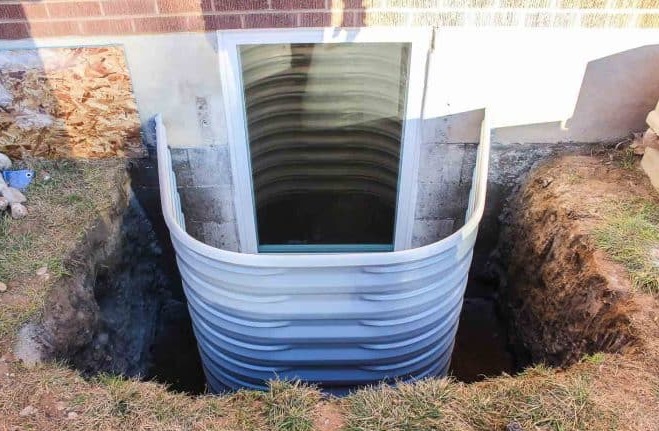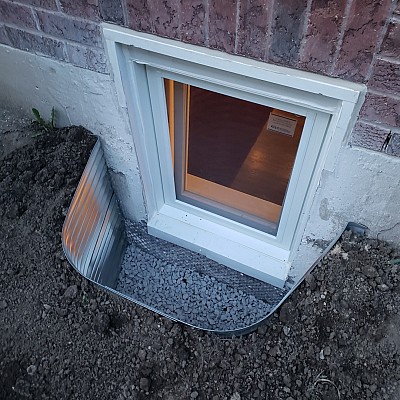Basement Window Replacement Cost In Toronto

Basements can be a hidden treasure within your home. Whether you envision a great room, a place for hanging out and movies, a man cave, creating a full living space, a rentable unit, or simply to accommodate your laundry and utility areas, basements can provide the necessary space to see this vision into a reality.
But oftentimes, basements can feel drafty, cold, drab, and even scary.
In this article, we are going to look at how to plan and cost several basement window replacement projects.
Window replacement with your basement windows is a good starting point for a basement remodel. Why? Often, original basement windows are huge energy suckers, due to being single pane, as well as old frame technology. If your home was built before 2000, chances are your basement windows are costing you money, and need to be replaced, especially if you want to utilize your basement for living activities.
There is one problem, however: basement windows, by their nature, are typically placed in concrete foundation walls, making them difficult to adjust. You cannot simply change sizes or enlarge the window for full use, without the possibility of major construction. Finding an affordable basement window installation cost requires you to understand your current basement options as they exist now.
Types of Basement Window Openings
1. Ventilation Openings

These openings tend to be small and are usually covered by a metal or mesh grate. These are common in unfinished basements. However, if you are planning to finish off your unfinished basement into a living area, these ventilation openings can be good options for placing hopper windows or using them as a starting place for constructing an egress window.
2. Basement Hopper Windows

Windows that may already exist inside your basement likely are hopper windows—simple windows that are typically a small rectangle, and operable to squeeze a small person through for absolute emergency access. However, older hopper windows are quite ugly and will need to be replaced if you want to make the basement feel like home. Often, there are many similar or identical size hopper windows off-the-shelf at home improvement stores as well as through window installation companies.
Learn more about how hopper windows can improve your home.
3. Basement Egress Windows

Egress windows are not just the window itself, but a full system of escape. It is the largest of these opening types. Egress windows involve a dug-out window well on the exterior, with a large enough window and opening to comfortably crawl out and escape due to an emergency like fire or flood. Many local municipal codes determine the size necessary to be considered egress, typically requiring the bottom of the window to be within a certain height from the ground (often within 42”) and the window crawl-out area to be of a certain width, like 36” from the wall, along with a ladder to crawl out.
Enlarging the Opening Size for Larger Windows
Let’s face it—larger windows bring in more light and can make a basement safer, as well as feel more like the other common areas in your home. But enlarging the concrete opening can be a costly endeavor.
Concrete Cutting a Basement Window Opening
This is a big, messy job. It often requires the use of large wet saws with diamond blades, demolition hammers, as well as a jackhammer to finish the job. And often, rebar is present, needing to be cut. Also, in rare cases, there could be piping or electrical embedded in the wall, requiring additional adjustments. When all finished, the opening needs to be sawed and sanded down to a smooth finish, with rounded corners. This is not usually a “do-it-yourself” project unless you have the know-how and experience in concrete and masonry.
If your basement wall is made of cinderblocks, this can potentially make it easier to “pop out” piece by piece after cutting through the mortar and rebar. But be prepared to have the right tools either way.
Ways to Keep the Cost Down in Window Opening Concrete Cutting
Be precise with the type of window you want to install. If you are willing to stick with the same width (many egress codes require a minimum of 22-28 inches window width), you can save money and time. So if your window opening already meets that minimum width, it is easier and less costly to stick with the same width, but greatly expand the height. Then find a similar or custom-order window that will match that size. Plus, just as importantly, keeping the width the same will likely not affect the load-bearing coverage of the stem walls. If you want to widen the opening, you may want to ask a structural engineer for their opinion. Remember: focus on height, not width. If you can, by all means, keep the width the same.
You have to keep in mind these key points (Toronto-specific building codes):
- Minimum Dimensions: The egress window must have a minimum opening width of 22 inches and a height of 24 inches, with a total opening area of at least 5.7 square feet.
- Height from the Ground: The bottom of the window must be no more than 42 inches from the floor.
- Window Well Requirements: The window well must extend at least 36 inches from the foundation wall and include a ladder if it’s deeper than 44 inches.
- Permit Costs: Expect to pay $200–$500 for permits, depending on the scope of the project.
Exterior Ground Excavation

Enlarging your basement window opening could require excavation of the ground on the exterior outside the proposed opening. If you are planning to construct an egress window, most likely you will need to excavate a large amount of soil. And be prepared for surprises: gas lines, power lines, landscape irrigation, large rocks, expansive soil. Plan for these surprises in costing out this project.
Ground excavation can use either an excavator tractor (rentable at many home improvement stores), or by hand with shovels, picks, and jackhammers and lots of manual labor. Either way, be prepared to find a place to use the excess soil. We recommend doing the excavation first, before the concrete cutting. This is important. It will give space to do exterior saw cutting, and will make it easier to remove the large concrete chunks. The last thing you want is for those pieces to fall inside the basement, making it even harder to move them out.
If you do any additional excavation, especially for basement egress windows, you will want to plan for retaining the soil in the window well. There are many solutions for this, including the use of cinderblocks, prefab window well inserts, or custom concrete. Many inserts can give a modern look, have fabulous style, using corrugated metal for a solid new feel.
Cost in Toronto: Concrete cutting costs range from $1,500 to $3,000, depending on the size and complexity of the project. And, excavation costs range from $800 to $2,000, depending on the depth and soil conditions.
Basement Window Choices
When it comes to the actual window, you have many choices. Small windows can stay with hopper windows. They are readily available and fairly standard. But it is good to pick one or two openings in your basement to have nicer window styles like crank operable casement windows, classic double-hung windows, single-hung windows, or even high-end European tilt-and-turn windows.
Actual costs of windows can range as low as $100 for basement hopper windows, to as high as $1,000+ for quality high-efficiency vinyl windows. Window installation companies can help you not only select the right window for the function you need but can do the installation, once the opening and window well are all prepared. They can quickly install, and have it done in a day.

When it comes to choosing replacement windows, you have several options:
- Hopper Windows: Affordable and practical for small openings. Cost: $100–$300.
- Casement Windows: Hinged windows that open outward, providing excellent ventilation. Cost: $300–$700.
- Double-Hung Windows: Classic style with two operable sashes. Cost: $400–$800.
- Tilt-and-Turn Windows: High-end European-style windows with excellent energy efficiency. Cost: $800–$1,200.
How to Estimate the Cost of Basement Window Well Enlargement
Search for home improvement pros in the areas of masonry, foundations, excavation, concrete cutting. Resources like HomeStars, Yelp, HomeAdvisor, and even Craigslist and Facebook. Show them. Do measurements. Check your local building codes for egress requirements.
One suggestion is to start with one window. It is easy for them to plan and do. One basement bedroom project we did, enlarged an already-existing basement hopper window opening, into a full-sized egress window, complete with cinder block retaining wall, ladder, plexiglass removable cover, drainage system, and a beautiful new single-hung vinyl window, for $6,000. This was a good all-in-one package, done by us, in four days.
If it is simply swapping out windows with new ones, it can all be done in a day.
Here’s a sample cost breakdown for a basement window replacement project in Toronto:
| Item | Cost Breakdown | Total Cost |
|---|---|---|
| Excavation (2 days labor) | Two laborers each at $200/day | $800 |
| Cinder block retaining wall | Blocks, cement, and labor of experienced mason | $450 |
| Rental of tools | $250/day for 2 days | $500 |
| Diamond blades for concrete saw | $75 each, 3 blades | $225 |
| Labor for concrete removal and cleanup | 1 day labor | $200 |
| Purchase of large basement replacement window | $250 | |
| Installation of the window | $400 | |
| Window well plexiglass cover | $150 | |
| Window crawl-out ladder | $75 | |
| Miscellaneous costs | Drainage gravel, parts, tools, delivery, etc. | $250 |
| Total | $3,300 |
For basement windows replacement, you can consider us, Delco windows and doors. We have been doing this work since 1989. We manufacture all our products in Toronto. Just call us and let’s have a discussion.
Conclusion
When planning out your basement window costs and design, keep these in mind:
- Be sure to construct a full emergency escape egress window for every inhabitable bedroom within your basement.
- Pick operable (opening) windows when you can. It allows for ventilation. Hopper and casement windows require the least space, as they don’t slide.
- Stick with current-sized openings for all windows in rooms like bathrooms, closets, and most common area windows. Build egress windows only when it makes sense, like in the most visible areas and any inhabitable bedrooms.
When finished, you will have a basement that has a modern look, is energy efficient, free of cold drafts, and well ventilated. Basement replacement windows can be one of the best return on investments of any home improvement project. Simply replacing the windows can turn a drab dungeon into the focal point of your home.
------------
About the Author
Delco Windows and Doors has been serving Toronto Canada since 1989, with door and window replacement and installation. Helping make homes throughout the GTA more energy efficient with an upgraded style.











